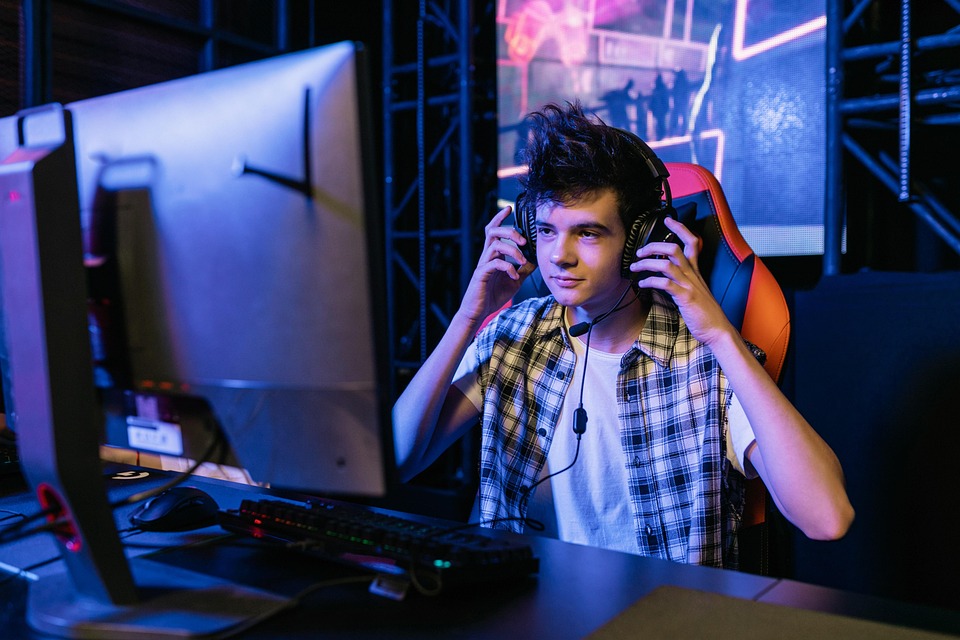In recent years, competitive gaming—often referred to as esports—has emerged from basements and arcade halls to become a multi-billion-dollar industry that captivates millions worldwide. This meteoric rise is emblematic of a cultural shift as gaming transcends traditional boundaries, uniting diverse audiences through the thrill of competition. What were once niche hobbies are now gateways to professional careers, massive streaming views, and opportunities for social engagement.
The Evolution of Competitive Gaming
The roots of competitive gaming can be traced back to the 1970s and 1980s, with early tournaments for arcade games like "Space Invaders." The landscape, however, underwent seismic changes with the advent of the internet in the 1990s, allowing players to compete remotely through titles like "Quake" and "Starcraft." These games established the foundation for organized tournaments, where players could showcase their skills and battle for prize money, heralding the birth of the esports scene.
Fast forward to the 2000s and beyond, and the competitive gaming landscape has exploded. Titles like "League of Legends," "Dota 2," and "Counter-Strike: Global Offensive" have become household names, attracting thousands of players and millions of fans. Major tournaments such as The International and the League of Legends World Championship offer prize pools that rival traditional sports leagues, with winners often taking home millions in cash, sponsorship deals, and fame.
The Convergence of Entertainment and Technology
One key factor in the rise of esports is the convergence of gaming technology and entertainment. The advent of high-speed internet, improved graphics, and accessibility of gaming platforms has made it easy for millions to not only play games but to connect and compete online. Streaming services like Twitch and YouTube Gaming have revolutionized how audiences consume content. Gamers can live-stream their gameplay, interact with fans in real-time, and build substantial followings, creating a new breed of celebrities and influencers.
The pandemic of 2020 only accelerated this trend. With traditional sports halted, millions turned to esports for entertainment, leading to record-breaking viewership numbers. Major brands began investing heavily in esports sponsorships and collaborations, recognizing the potential of reaching a young, engaged audience that traditional platforms struggled to capture.
A Global Community
The sense of community fostered by competitive gaming is among its most notable attributes. Players from different backgrounds and cultures unite through a shared passion, often communicating in a universal gaming language. Esports has broken down geographical barriers, allowing individuals from diverse nations to compete in global tournaments. This inclusivity has turned esports into a cultural phenomenon, where fans not only play but actively support their teams and favorite players through social media, merchandise, and local meet-ups.
Diversity within gaming also contributes to its global appeal. Games are often designed with varied skill levels in mind, making them accessible to novices and experts alike. Initiatives like the Overwatch League have worked to promote inclusivity among women, non-binary individuals, and minorities, encouraging a more representative gaming community.
The Threat of Regulation and Controversy
As the industry burgeons, it faces its share of challenges. Issues such as cheating, toxicity, and regulatory concerns have prompted discussions within the esports community. Revelations of match-fixing scandals, toxic player behavior, and concerns over mental health among gamers have spurred organizations and game developers to take action. Codes of conduct, mental health support, and educational initiatives aim to create a safer, more welcoming environment for players and fans.
Moreover, as the line between traditional sports and esports continues to blur, various stakeholders, from governments to private organizations, are exploring regulations. While some see it as a necessary step toward legitimization, others warn of potential constraints on creativity and freedom within the gaming community.
The Future of Competitive Gaming
Looking ahead, the future of competitive gaming seems bright. With advancements in technology, including virtual and augmented reality, the gaming experience is set to become even more immersive. As more players take the plunge into esports, the industry is likely to evolve to accommodate new genres and gaming styles.
Furthermore, the integration of esports into educational institutions, such as high schools and universities, signals newfound legitimacy. Scholarships for players and official varsity teams are helping to normalize competitive gaming, creating pathways for future generations to thrive in the industry.
Conclusion
The rise of competitive gaming as a global phenomenon reflects not just changes in entertainment but broader cultural shifts. With its unique blend of skill, community, and competition, esports has captured the imaginations of players and fans alike. As it continues to evolve, the potential for innovation, inclusivity, and accessibility remains boundless, promising a vibrant future for gamers around the globe. Whether you’re a casual player, an avid fan, or an aspiring professional, one thing is clear: the gaming world has leveled up, and its impact is only just beginning.



